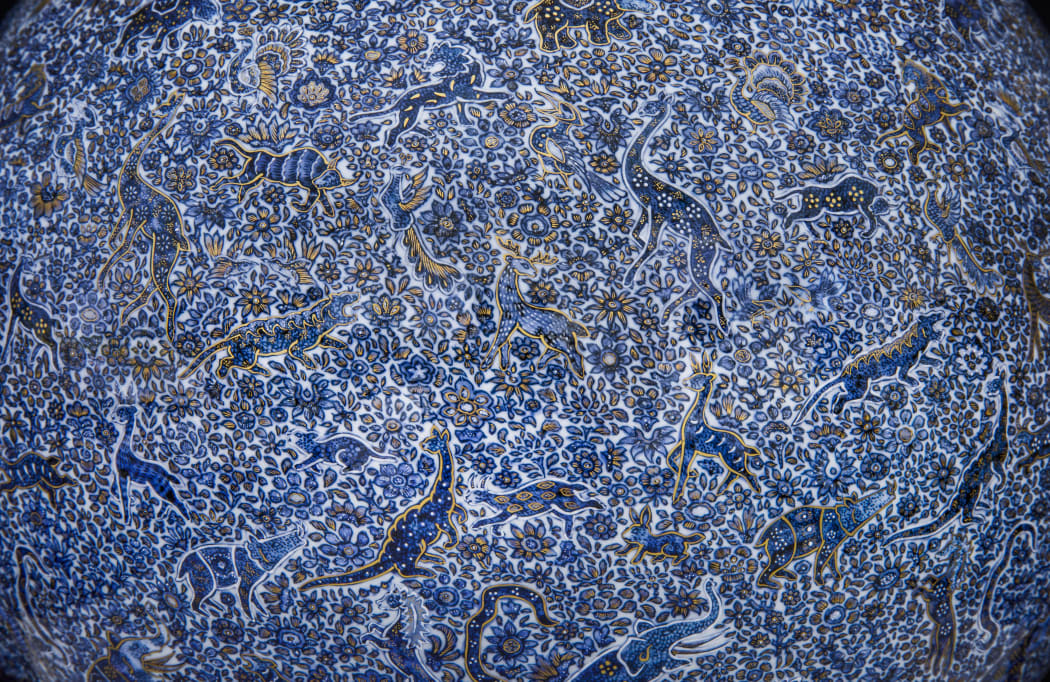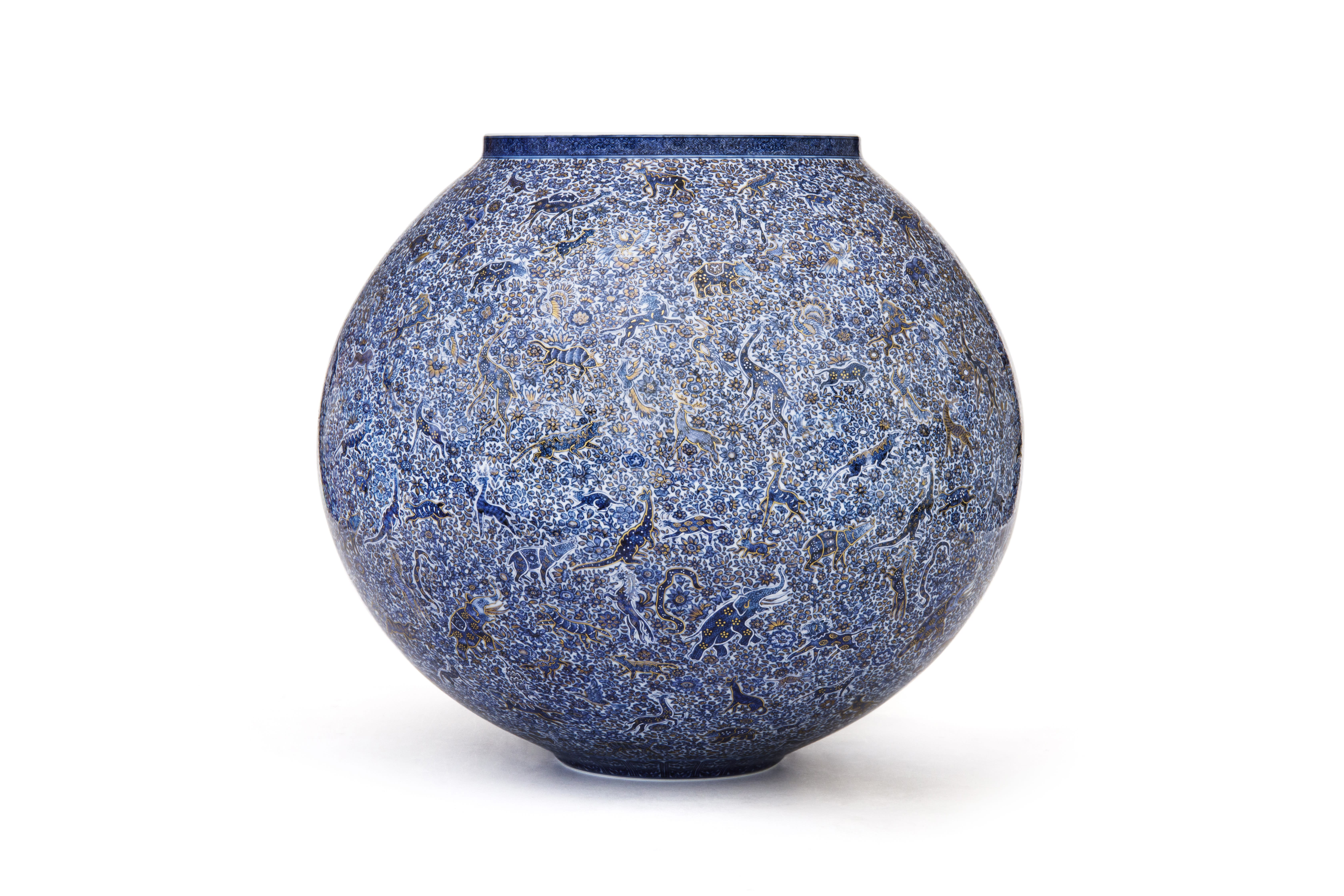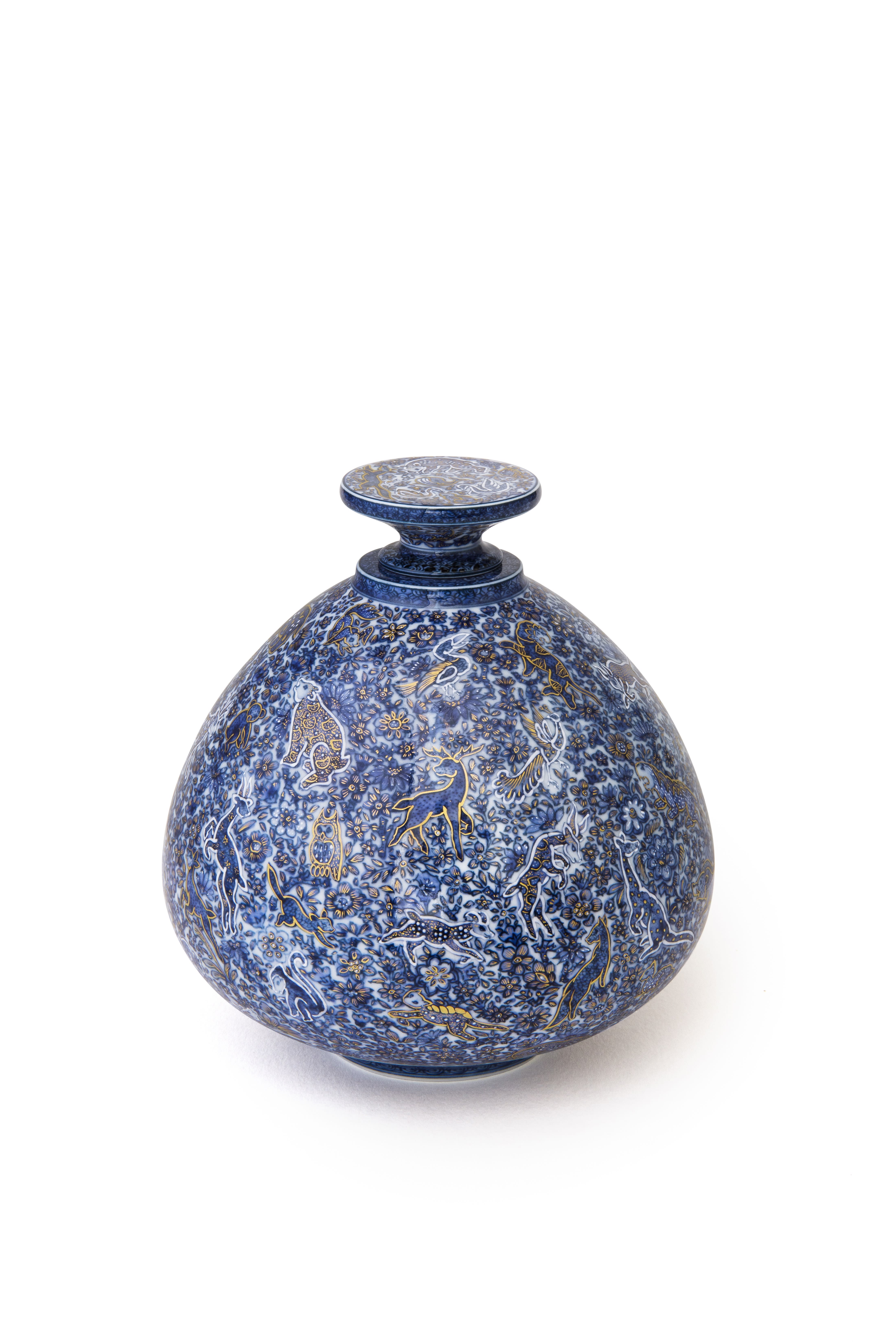
Yuki Hayama is no stranger to dense, ornate decorative elements, especially when they exist on the surfaces of his work.
The Shinrabansho motif is one that is used commonly on his pieces. When browsing the exhibition, Garden of Dreams | Porcelain Stories by Yuki Hayama, one can see that this motif shows up in perfume bottles. Memory boxes. And vases.
The Shinrabansho motif is inspired by the Javanese Batik textiles that first emerged in Japan in the 17th century.

Javanese textiles are known as double sided clothes with identical patterning on both sides. This kind of elaborate, dedicated decoration was the result of a harmonious merging of ancient motifs with borrowings from traditions in India, China, the Middle East and Europe.
These textiles were appreciated by the Japanese, examples include Main Sembagi, an Indian textile that was initially made for the Indonesian market. It’s geometric and condense patterning became treasured in Japan and the Japanese incorporated larger sheets into dress items like obi sashes and smaller sheets into the tea ceremony as well as for containers for precious objects.
During the Japanese occupation of Indonesia in 1942-1945, a new cloth emerged called the “Batik Hokokai”, featuring high technical standards and detailed, dense decoration that was an amalgamation of Chinese, Javanese, and Japanese motifs.
Indonesian textiles, to this day, left a definite imprint on Japanese textile decoration, fashion, and applied arts.

H29.8 x W33.5 cm
Yuki Hayama’s Shinrabansho vase is made of dense illustrations completely covering the bellied out form of the vase. The illustrations of oxen, deer, boar, and rabbit harmoniously exist in a garden of porcelain blue and white. The animals have gilded silhouettes, a thin brush outline of gold luster that brings forward the illustrations - almost creating a halo around the figures.

H6.3 x W6.4 cm
This memory box highlights on the surface, Yuki Hayama’s Shinrabansyo motif. Characterized by the dense illustrations of plants and animals, the patterning fills the entire space of the form. The memory box, a satisfying cube shape, has direct and tight edges. The imagery continues inside the piece, revealing a pleasant surprise once opened.

H11.8 x W11.2 cm
This perfume bottle by Yuki Hayama has satisfying visuals alongside unique form. The body of the form bellies out more towards the bottom and the illustrations on the surface of the bottle cover every conceivable white space, nearly rendering the entire piece a solid blue. The animals frolic, dance, and live in the blue porcelain flowers painted on the surface and we simply witness, from above, their world.
"Everything in Everything is the existence and phenomenon of all things, the universe with infinite expanse,
It is a term that refers to all things that are life in this world.
The Indus Valley Civilization was born with the blessings of the forest and perished with the disappearance of the forest.
The remaining people passed on the memories of the blessings of the forest to posterity as beautiful patterns.
This pattern crosses the sea with the technique of Indian cotton cloth, and is the "forest of life" in the ancient Javanese three countries.
It was called as Java chintz and was passed down to Japan as Java chintz.
Elephant, deer, river horse, horse, camel, snake, lion, rabbit, peacock, pigeon, giraffe, reindeer, sparrow, squirrel
Cow, tiger, rhino, kangaroo, goat, om, turtle, sheep, cat, mustelidae
The above 24 species of animals are drawn.
The number 24 also means the hour tick of the day"
Yuki Hayama
